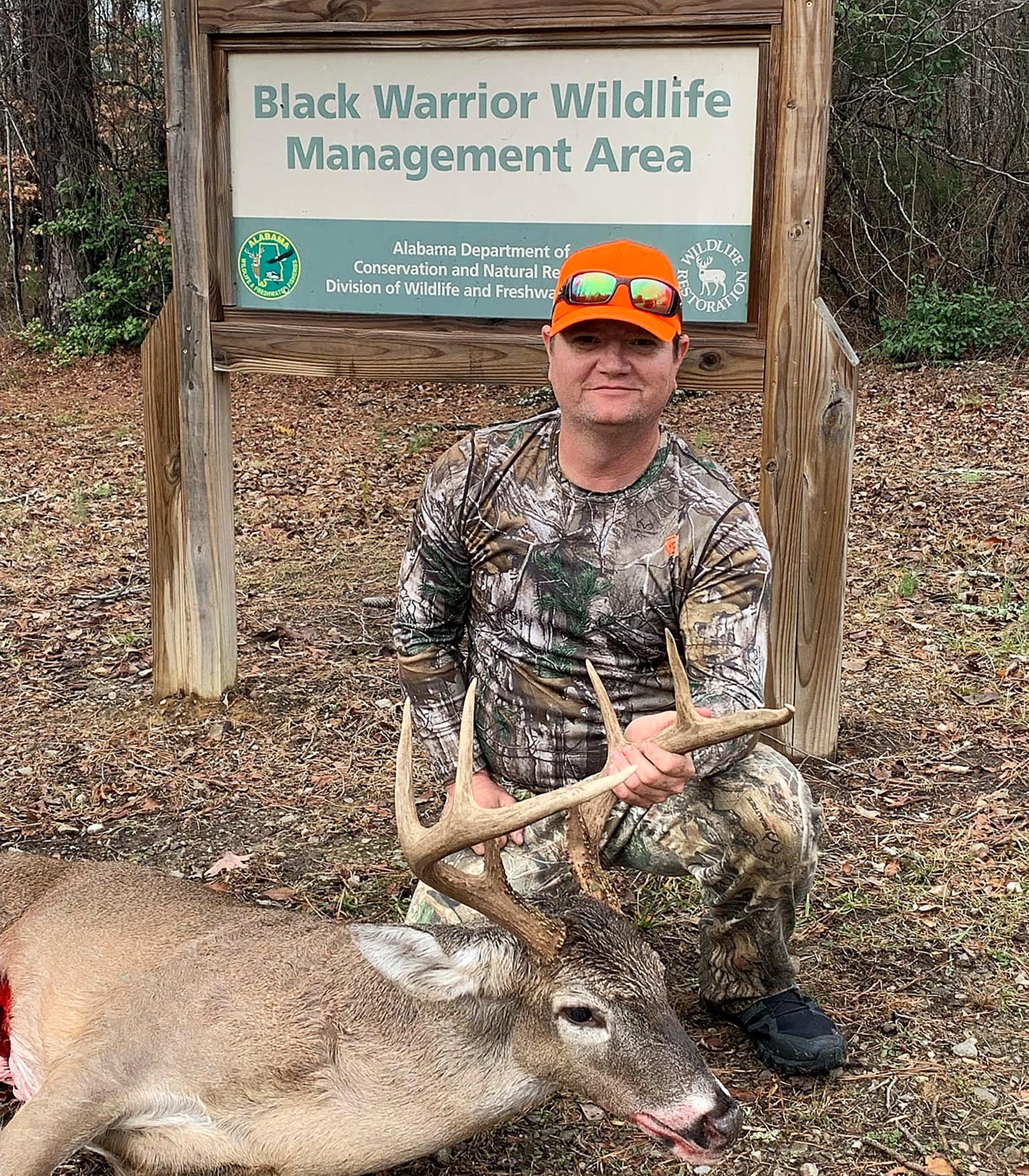By DAVID RAINER, Alabama Department of Conservation and Natural Resources
For most of the state, Alabama deer hunters are in the midst of the peak hunting period when deer start moving with increased rutting activity. Chris Cook, Deer Program Coordinator with the Alabama Department of Conservation and Natural Resources’ Wildlife and Freshwater Fisheries (WFF) Division, says hunters need to spend as much time as possible in the woods for the rest of the season.
“If we get normal weather for the rest of the season, I suspect a lot of deer will be killed,” Cook said. “In the southern part of the state, the rut is getting ready to start up. When you’ve got that going on and the weather is good, then hunters are going to be in the woods. That’s usually the big factor. It’s not necessarily the deer activity; it’s the hunter activity too. Hunters are a lot more likely to stick it out and spend more time in the woods if the weather is in the 40s as opposed to the 70s or teens and it’s not raining. Weather really plays huge part in hunter activity.
“With the rut starting, the bucks are getting interested. This is the time to be out hunting if you’re in the lower two-thirds of the state.”
The deer season in the majority of the state runs through February 10. Visit www.outdooralabama.com/seasons-and-bag-limits/deer-season for details about deer season dates in Alabama’s multiple deer zones.
Cook said the hunting season didn’t start particularly well because of the fall weather and an unusually cold spell at Christmas.
“It was really dry leading into the hunting season in a lot of the state,” he said. “That’s always going to have an impact on wildlife, especially deer. The acorn crop was hit or miss. In some areas it was pretty good, some just average and some below average.
“That four or five days of freezing cold weather really put a hurting on everybody’s food plots. Most people don’t plant enough acreage to impact the carrying capacity or overall food supply for the deer herd, but it definitely could impact people’s hunting success because a lot of people rely heavily on those food plots.”
Cook said to have a noticeable impact on the deer herd, landowners and leaseholders would have to maintain a significant amount of the land area in wildlife openings.
“Most people plant to attract deer during hunting season,” he said. “For them, it’s about finding the right location to allow access to the hunters. If they’re planting food plots with the purpose of improving overall habitat quality, carrying capacity of the land and affecting deer health, then you’re probably going to need at least 5% of the acreage in good quality food plots throughout the year. A bare minimum would be 2-3%. Most properties have 1% or less in food plots, especially leased land. If you’re able to plant enough acreage, then the challenge is planting the right stuff for the deer to have something to eat year-round and not just during hunting season.”
With the moderation of temperatures lately, Cook said some of the food plots will recover. With other browse material in short supply, the surviving food plots may be the place to be.
“If they do have a few food plots that bounce back and start growing well, they may be able to have an outstanding finish to the season,” he said. “We’ll see how it goes. This continuing warmer weather should help everything. It’ll take a little time, but I’ve already had reports that some of the clover is coming back.”
In years past, a 200-pound deer was not particularly common. In the past several years, that has changed. Anyone who keeps up with Alabama’s deer season through social media has seen another year with really large deer, not only antler-wise but also body size with numerous deer above that 200-pound mark.
“Anytime you see a deer that big, it’s usually a combination of age and having good food to eat,” Cook said. “A lot of people are managing their properties for wildlife, and that would include not only the food plots but how they manage the timber stands with burning and thinning.”









